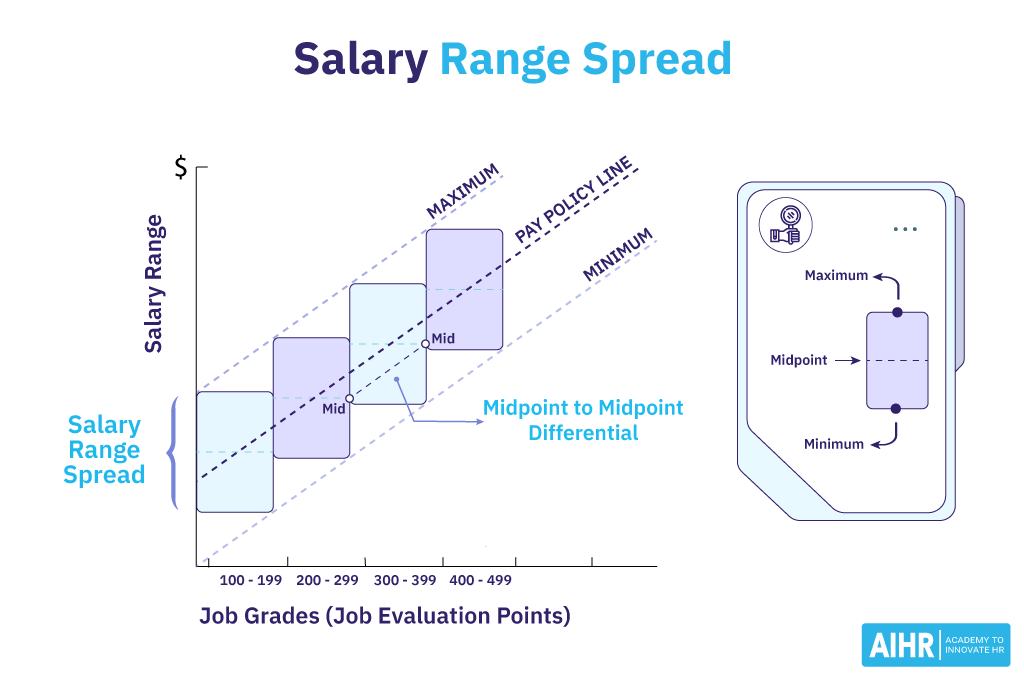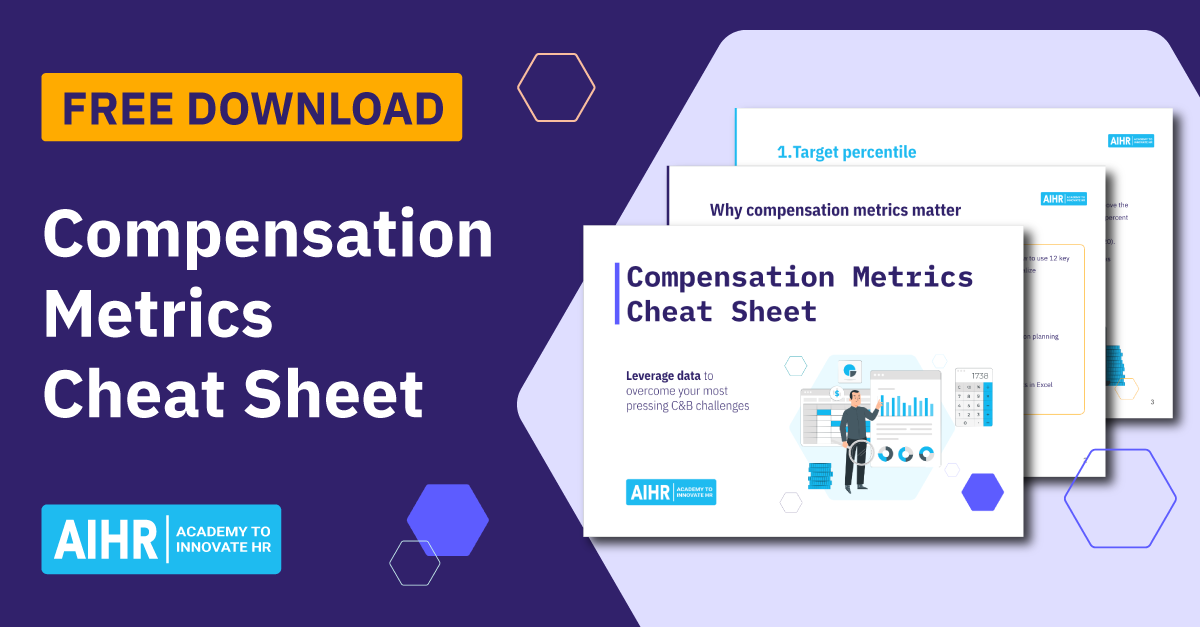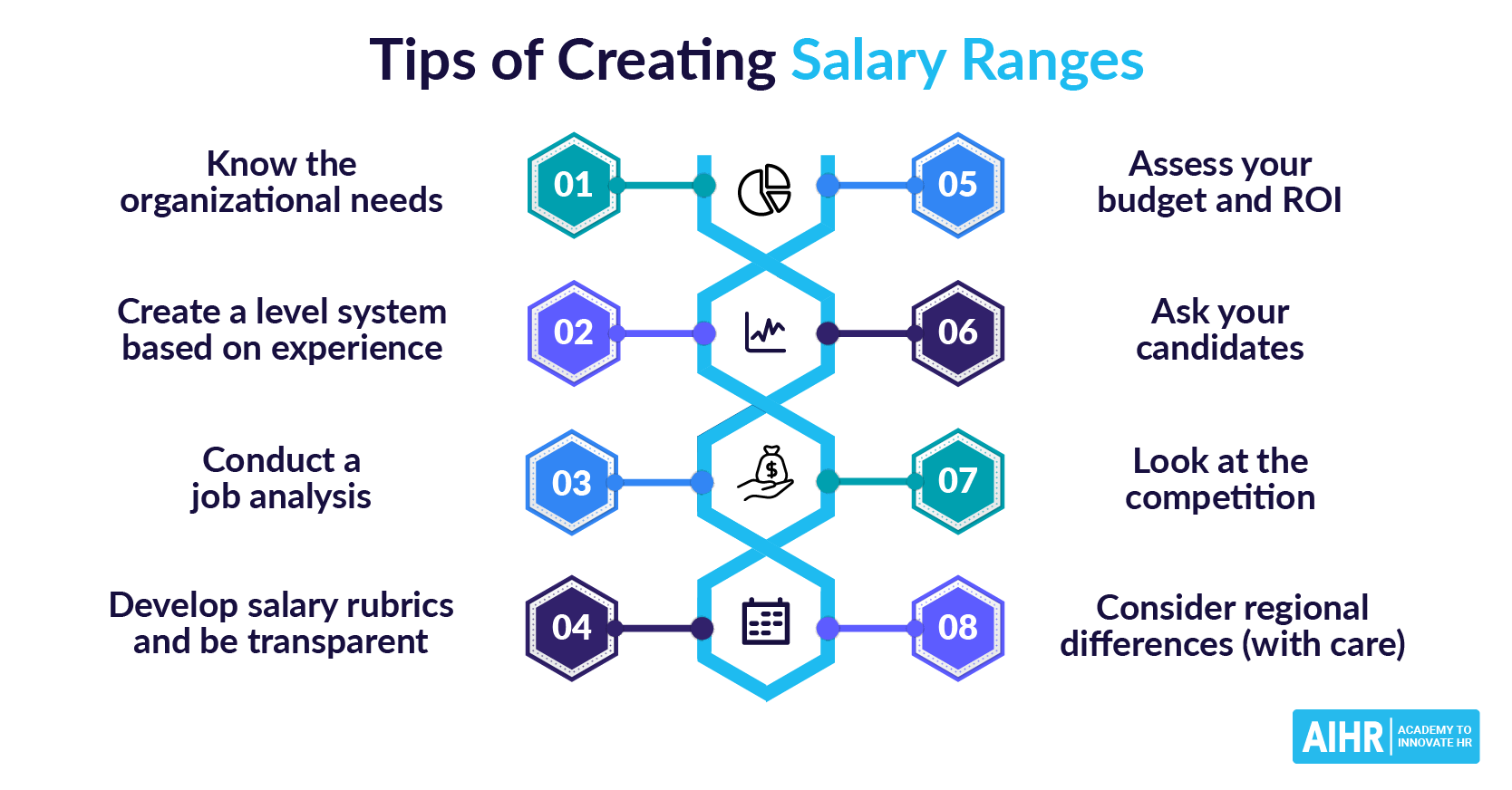Range Spread
What is range spread in HR?
A range spread is the range of pay established by employers to compensate employees for performing their job. It includes a minimum, maximum, and mid-range pay rate. For example, the range for a particular position can have a minimum of $45,000 and a maximum of $60,000:
| Minimum | Range midpoint | Maximum |
| $45,000 | $52,500 | $60,000 |
A salary range spread is established through understanding market pay rates and external benchmarking. A range spread is useful for multiple reasons:
- Job postings: Many jobs require a salary range spread to be posted, so it is useful to have this information on hand.
- Setting targets: You can create compensation targets and adjust along the way to ensure there is an appropriate spread of pay across the company.
- Establishing pay equity: You’re able to compare spreads across different departments and roles and understand the state of internal pay equity.
- Clear communication: Employees can be shown the salary range and where they fall within the range, making communication around salary clear and transparent.
- Plan salary increases: Companies are better able to understand salary increases and promotions if a clear range spread is present. For example, if an employee is already at the maximum of a range when it comes to annual increases, an employer has to make a decision on if a significant increase is needed or not (particularly when compared to employees at the minimum point).
Here is what salary range spread fits in the context of creating salary ranges:

How do you calculate the salary range spread?
Depending on the data you have access to, you can calculate range spread in a couple of different ways:
1. Use the minimum pay and maximum pay data. The formula is:
(Maximum pay – Minimum pay) / Minimum pay = Range spread
In other words, if the maximum is $50,000 and the minimum is $30,000, your range spread from the minimum to the maximum number would be:
($50,000 – $30,000) / $30,000 = 66%.
2. Use midpoints. If you know the midpoint as well as the minimum and maximum, you can do the following:
- To calculate the spread above the range midpoint: (Maximum pay – Midpoint pay) / Midpoint pay
- To calculate the spread below the range midpoint: (Minimum pay – Midpoint pay) / Midpoint pay.
Optimize salary range spreads to strengthen pay equity
Clear salary range spreads support transparent pay practices and help set fair compensation levels across roles.
In AIHR’s Compensation & Benefits Certificate Program, you’ll learn to design competitive and balanced pay ranges using market data and best practices.
This self-paced, online program will help you establish clear range spreads, set compensation targets, and foster fair pay practices across your organization.
What affects the range spread at your organization?
Some of the factors that could affect your range spread include:
- The use of broadbanding, which is a compensation approach that consolidates a range of similar job classifications into one pay band.
- The tenure of an employee. Many times employees that have long tenure are outliers when placed on a salary spread due to historical increases.
- The number of positions within the company.
- The complexity of roles; some roles and departments have a wider variety of roles and levels, and the spread might vary more.
- The pay grade structure in the company.
- The maturity of a company’s job architecture. If there are clear guidelines around job families, levels, and grading, understanding your range spread becomes easier.
What is a good range spread?
A good salary range spread is typically anywhere between 30% to 40%. However, this is heavily dependent on the job, job level, and the industry. Findings by the Economic Research Institute use the following spreads for these job levels:
- Administration/Operations: 40% +
- Professional/Management: 50% +
- Executives: 50-65% +









